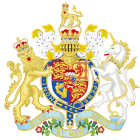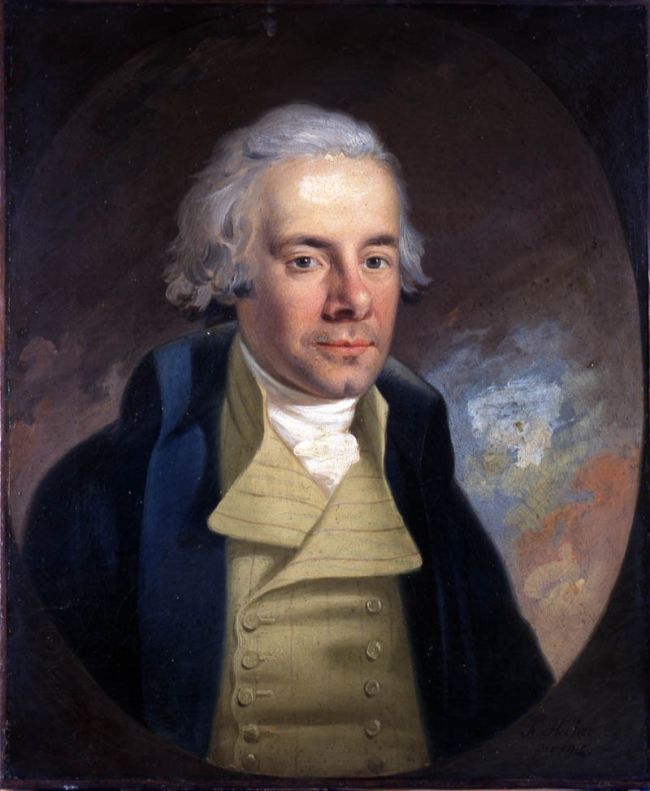Slave Trade Act 1807 - legal in most of the British Empire until the Slavery Abolition Act in 1833
From Wikipedia, the free encyclopedia - https://en.wikipedia.org/wiki/Slave_Trade_Act_1807
The Slave Trade Act 1807, officially An Act for the Abolition of the Slave Trade,[1] was an Act of the Parliament of the United Kingdom prohibiting the slave trade in the British Empire. Although it did not abolish the practice of slavery, it did encourage British action to press other nation states to abolish their own slave trades.
Many of the supporters thought the Act would lead to the end of slavery.[2] Slavery on English soil was unsupported in English law and that position was confirmed in Somersett's Case in 1772, but it remained legal in most of the British Empire until the Slavery Abolition Act in 1833.
 | |
| Long title | An Act for the Abolition of the Slave Trade |
|---|---|
| Citation | 47 Geo III Sess. 1 c. 36 |
| Introduced by | William Grenville |
| Territorial extent | British Empire |
| Dates | |
| Royal assent | 25 March 1807 |
Background
Martin Meredith states, "In the decade between 1791 and 1800, British ships made about 1,340 voyages across the Atlantic, landing nearly 400,000 slaves. Between 1801 and 1807, they took a further 266,000. The slave trade remained one of Britain's most profitable businesses."[3]
 "Am I Not a Man and a Brother?" medallion created as part of anti-slavery campaign by Josiah Wedgwood, 1787
"Am I Not a Man and a Brother?" medallion created as part of anti-slavery campaign by Josiah Wedgwood, 1787
The Committee for the Abolition of the Slave Trade was formed in 1787 by a group of Evangelical English Protestants allied with Quakers, to unite in their shared opposition to slavery and the slave trade. The Quakers had long viewed slavery as immoral, a blight upon humanity. By 1807 the abolitionist groups had a very sizable faction of like-minded members in the British Parliament. At their height they controlled 35–40 seats. Known as the "Saints", the alliance was led by the best known of the anti-slave trade campaigners, William Wilberforce, who had taken on the cause of abolition in 1787 after having read the evidence that Thomas Clarkson had amassed against the trade.[4] These dedicated Parliamentarians had access to the legal draughtsmanship of James Stephen, Wilberforce's brother-in-law. They often saw their personal battle against slavery as a divinely ordained crusade. On Sunday, 28 October 1787, Wilberforce wrote in his diary: "God Almighty has set before me two great objects, the suppression of the slave trade and the reformation of manners."[5]
 William Wilberforce, the leader of the British campaign to abolish the slave trade
William Wilberforce, the leader of the British campaign to abolish the slave trade
Their numbers were magnified by the precarious position of the government under Lord Grenville, whose short term as Prime Minister was known as the Ministry of All the Talents. Grenville himself led the fight to pass the bill in the House of Lords, while in the Commons the Bill was led by the Foreign Secretary, Lord Howick (Charles Grey, later Earl Grey).[1] Other events also played a part; the Acts of Union 1800 brought 100 Irish MPs into Parliament, most of whom supported abolition.[6] The Bill was first introduced to Parliament in January 1807. It went to the House of Commons on 10 February 1807. On 23 February 1807, twenty years after he first began his crusade, Wilberforce and his team were rewarded with victory. After a debate lasting ten hours, the House agreed to the second reading of the bill to abolish the Atlantic slave trade by an overwhelming 283 votes for to 16.[4] The Bill received Royal Assent on 25 March 1807.[7]
However, while this Act abolished the slave trade in the British Empire, slavery itself continued for another generation. It was not until the passage of the Slavery Abolition Act 1833 that slavery itself was eventually abolished.
Other nations
By its Act Against Slavery of 1793, the Parliament of Upper Canada in British North America had abolished the slave trade, and in 1805 a British Order-in-Council had restricted the importation of slaves into colonies that had been captured from France and the Netherlands.[8] Following adoption of the 1807 Act, Britain used its influence to pressure other nations to end their own slave trades.[9] By the 1810 Anglo-Portuguese treaty Portugal agreed to restrict its trade into its colonies; in the 1813 Anglo-Swedish treaty Sweden outlawed its slave trade; and in the 1814 Treaty of Paris whereby France agreed with Britain that the slave trade was "repugnant to the principles of natural justice" and agreed to abolish the slave trade in five years. In the 1814 Anglo-Dutch treaty the Netherlands outlawed its slave trade, and the 1817 Anglo-Spanish treaty called for Spain to suppress its trade by 1820.[8]
The United States adopted its Act Prohibiting Importation of Slaves on March 2, 1807, the same month and year as the British action. It provided for the abolition of its Atlantic slave trade but did not alter its internal trade in slaves. Article 1, Section 9, Clause 1 of the United States Constitution forbade the closing of the slave trade for twenty years, until 1808. The long-planned law was passed a year earlier, and with the economic incentives of the slave trade coming to an end, there was both a spike number of slaves being traded and a unification of political factions against the trade.[10]
Enforcement
The Act created fines for captains who continued with the trade. These fines could be up to £100 per enslaved person found on a ship. Captains would sometimes dump captives overboard when they saw Navy ships coming in order to avoid these fines.[11] The Royal Navy, which then controlled the world's seas, established the West Africa Squadron in 1808 to patrol the coast of West Africa, and between 1808 and 1860 they seized approximately 1,600 slave ships and freed 150,000 Africans who were aboard.[12][3] The Royal Navy declared that ships transporting slaves were the same as pirates. Action was also taken against African leaders who refused to agree to British treaties to outlaw the trade, such as "the usurping King of Lagos",[citation needed] who was deposed in 1851. Anti-slavery treaties were signed with over 50 African rulers.[13]
In the 1860s, David Livingstone's reports of atrocities within the Arab slave trade in Africa stirred up the interest of the British public, reviving the flagging abolitionist movement. The Royal Navy throughout the 1870s attempted to suppress "this abominable Eastern trade", at Zanzibar in particular. In 1890 Britain handed control of the strategically important island of Heligoland in the North Sea to Germany in return for control of Zanzibar, in part to help enforce the ban on slave trading.[14][15]
Source & Rear of Article - https://en.wikipedia.org/wiki/Slave_Trade_Act_1807
